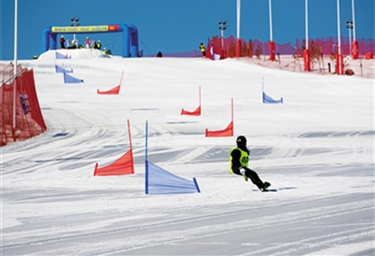Cultural relics restorers extend future of Yungang Grottoes
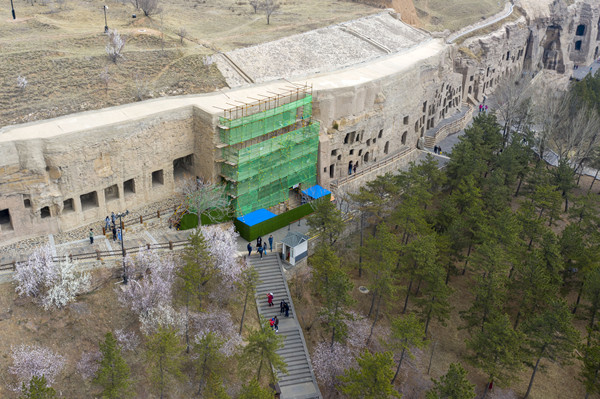
Work continues tirelessly at the conservation and restoration site at the Yungang Grottoes. [Photo/IC]
It has been widely said that cultural relics are profoundly important historical and cultural heritage artifacts, time travelers carrying thousands of years of historical civilization -- a fact that, more often than not, has inspired deep reverence among those engaged in their conservation and restoration.
One example of that, is the group of people who are full of enthusiasm and who have dedicated themselves body and soul to the protection and restoration of cultural relics in the Yungang Grottoes -- one of China's largest ancient grotto groups -- located in Datong city, North China's Shanxi province.
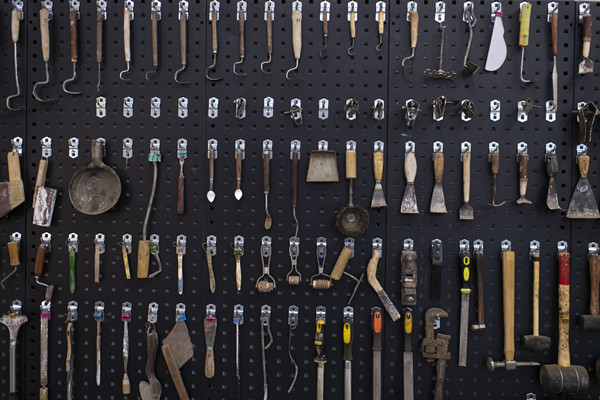
Various specialist tools are carefully stored, for cultural relics conservation and restoration of the Yungang Grottoes. [Photo/IC]
Xiao Guan, who is in her 20s, is a restorer of movable cultural relics -- such as pottery, iron and ancient books -- at the Yungang Grottoes Research Institute.
Different types of movable cultural relics need different specialist tools and methods in terms of protection and restoration, which may seem boring to most but fascinating to Xiao.
"When I was an undergraduate, I found that doing pottery splicing was very interesting, which aroused my interest in cultural relic restoration. That's why I did this job here after graduation," Xiao said.
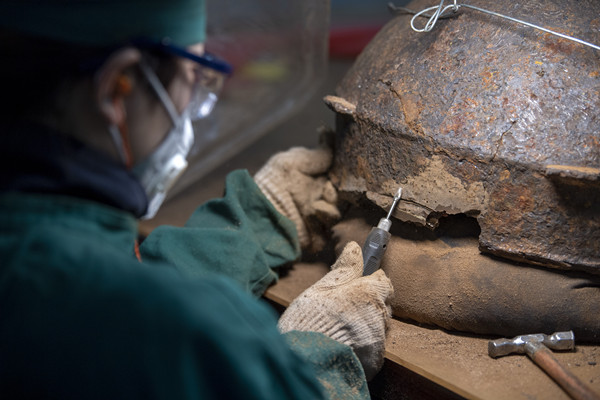
Xiao Guan restores a piece of an artifact at the Yungang Grottoes Research Institute in Datong city. [Photo/IC]
Now, more than two years after graduation, she has handled about 100 cultural relics from the grottoes.
The protection and restoration of the murals is also regarded as a vital part of the cultural relics conservation and restoration in the grottoes.
In 2013, Dai Yuxiang, who has loved anything to do with ancient cultural relics since childhood, quit his job as a tour guide and came to the Yungang Grottoes Research Institute to engage in the preservation and restoration of the murals.
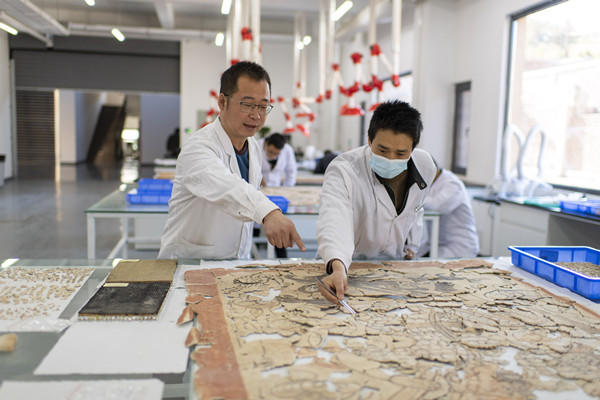
With infinite care, Dai Yuxiang (right), together with his teacher Liu Hongbin, assembles fragments of tomb murals, at the Yungang Grottoes Research Institute. [Photo/IC]
Because he didn't have professional theoretical knowledge and practical experience at the beginning, for the first few years Dai studied with an experienced teacher, attended training courses and participated in auxiliary work instead of directly handling the relics.
As a result, Dai accumulated a great deal of experience in the protection and restoration of murals after eight years of study and work.
"If through my hands I can extend the life of cultural relics that are broken or about to disappear, or restore them to a relatively complete state, it is very meaningful," he said.


